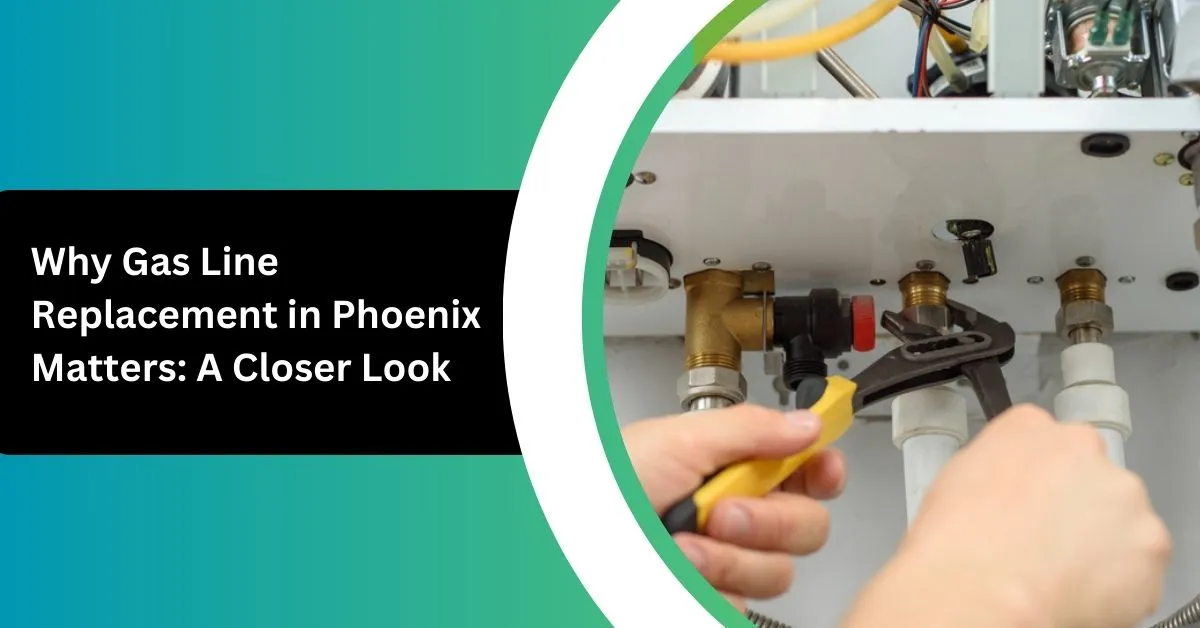

14 03
2024
Gas lines play a crucial role in delivering natural gas safely to homes and businesses. In a bustling city like Phoenix, where energy demand is high, maintaining and replacing gas lines becomes paramount. In this article, we’ll delve into the importance of gas line replacement in Phoenix, addressing common questions and shedding light on why it matters.
Gas lines are subject to wear and tear over time. Factors such as age, corrosion, soil conditions, and environmental factors can contribute to their deterioration. When gas lines become compromised, they pose significant safety risks, including gas leaks and potential explosions.
In Phoenix, where extreme temperatures and soil conditions prevail, the need for proactive gas line replacement cannot be overstated. By replacing aging or damaged gas lines, utility providers and homeowners alike can mitigate these risks, ensuring the safety of residents and the surrounding environment.
Gas lines serve as the lifeline for powering various appliances in homes and businesses, including stoves, water heaters, and furnaces. They provide a reliable and cost-effective source of energy. However, when gas lines are compromised, they not only jeopardize safety but also lead to energy inefficiency and increased utility costs.
By investing in gas line replacement in Phoenix, residents and businesses can maintain uninterrupted access to natural gas while maximizing energy efficiency. This not only enhances safety but also contributes to sustainable energy consumption practices, aligning with the city’s goals for environmental conservation and sustainability.
Gas lines are typically made of durable materials such as steel, copper, or plastic. They are buried underground to protect them from external elements and potential damage. In Phoenix, where soil conditions can be challenging, gas lines are often installed at specific depths to ensure their integrity and longevity.
Identifying a gas line underground can be challenging, as it is not readily visible. However, utility providers and licensed professionals use specialized equipment and techniques to locate and assess gas lines for maintenance or replacement purposes.
The lifespan of gas lines varies depending on several factors, including the material used, environmental conditions, and maintenance practices. Generally, steel gas lines can last anywhere from 50 to 70 years, while plastic lines may have a shorter lifespan of around 50 years.
In Phoenix, where soil conditions and temperature fluctuations can accelerate corrosion and deterioration, gas lines may require replacement sooner than in other regions. Regular inspections and proactive maintenance can help extend the lifespan of gas lines, ensuring their continued reliability and safety. To learn more about top services related to gas line replacement in Phoenix, check this out https://froggyfix.com/gas-line-replacement-in-phoenix-ensuring-safety-and-efficiency/.
While gas line replacement is crucial, it’s not without its challenges. In a sprawling city like Phoenix, with its vast network of underground infrastructure, replacing gas lines can be a complex and time-consuming endeavor.
One of the primary challenges is identifying the precise location of existing gas lines. Over time, underground utilities may shift or become obscured, making it difficult to pinpoint their exact position. This necessitates the use of advanced technology, such as ground-penetrating radar and electromagnetic induction, to accurately locate gas lines before replacement work can commence.
Moreover, coordinating gas line replacement projects with other ongoing construction or utility maintenance activities adds another layer of complexity. Collaboration between utility providers, contractors, and city officials is essential to minimize disruptions and ensure the efficient execution of replacement projects.
Cost is another factor that must be considered. While gas line replacement is undoubtedly an investment in safety and reliability, it can also represent a significant financial outlay for homeowners and businesses. However, the long-term benefits, including reduced maintenance costs, energy savings, and enhanced property value, often outweigh the initial expense.
In addition to technical and logistical challenges, gas line replacement in Phoenix is subject to regulatory requirements and compliance standards. Utility providers must adhere to federal, state, and local regulations governing the installation and maintenance of gas infrastructure.
These regulations are designed to ensure the safety of gas distribution systems and protect the public from potential hazards. They encompass various aspects of gas line replacement, including material selection, installation techniques, pressure testing, and leak detection protocols.
Compliance with regulatory standards is non-negotiable when it comes to gas line replacement. Failure to meet these requirements not only jeopardizes public safety but also exposes utility providers to legal and financial liabilities. Therefore, adherence to regulatory guidelines is paramount throughout all phases of gas line replacement projects.
As technology advances and environmental considerations take centre stage, the future of gas line infrastructure is evolving. Innovative materials, such as high-density polyethylene (HDPE) and corrosion-resistant alloys, offer improved durability and longevity compared to traditional materials like steel.
Furthermore, advancements in leak detection technology, remote monitoring systems, and predictive maintenance algorithms are enhancing the safety and reliability of gas distribution networks. These technologies enable early detection of potential issues, allowing for timely intervention and proactive maintenance to prevent costly downtime and safety incidents.
Additionally, the transition towards renewable energy sources and electrification may impact the role of natural gas in the future energy landscape. While gas line replacement remains essential for the foreseeable future, ongoing evaluation and adaptation of infrastructure strategies will be necessary to align with changing energy trends and sustainability objectives.
Gas line replacement in Phoenix is not just about maintaining the status quo; it’s about preparing for the future. By addressing the challenges, complying with regulations, and embracing innovation, we can ensure the continued safety, reliability, and sustainability of our gas infrastructure.
Whether it’s replacing aging pipelines, upgrading leak detection systems, or integrating renewable energy solutions, proactive measures today lay the foundation for a safer and more resilient tomorrow. Together, let’s prioritize the maintenance and modernization of gas line infrastructure to safeguard our communities and pave the way for a brighter, more sustainable future.